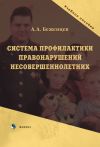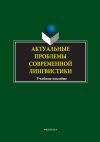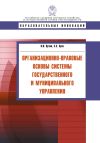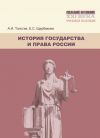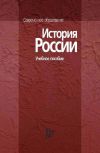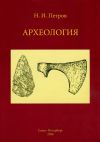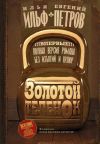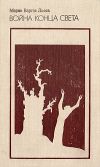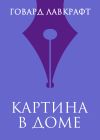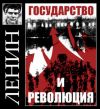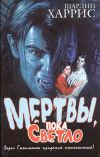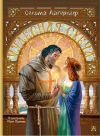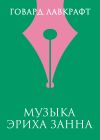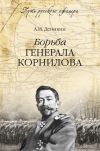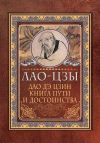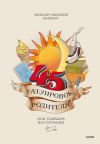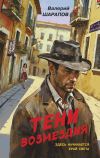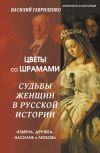Текст книги "Glimpses of Britain. Учебное пособие"
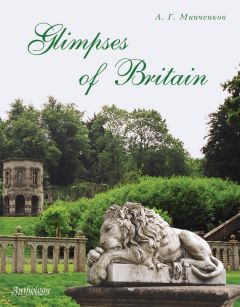
Автор книги: Алексей Минченков
Жанр: Иностранные языки, Наука и Образование
Возрастные ограничения: +12
сообщить о неприемлемом содержимом
Текущая страница: 5 (всего у книги 15 страниц) [доступный отрывок для чтения: 5 страниц]
James hoped for the union of England and Scotland, but Parliament was opposed to the idea and even refused free trade and English citizenship to the Scots. Except for removing the danger of border warfare and French influence in Scotland, the two countries remained separate nations with a common king for another century.
In Ireland, the English attempts to enforce the Anglican supremacy led to uprisings in Northern Ireland. The English government responded by seizing land in six northern counties and settling Scotch Presbyterians, Welsh and English in the area known as Ulster.
The Jacobean style of architecture often refers to houses built in the first part of the reign of James I, forming a transition between the Elizabethan and the pure Palladian style introduced by Inigo Jones. The Jacobean style adopted Palladian motifs in a free form communicated to England through German and Flemish carvers rather than directly from Italy. It is characterized by a more formal design; much use was made of columns and pilasters, round-arch arcades and flat roofs with openwork parapets. All these features can be seen in Hatfield House [48; 49]. Another fine example of a Jacobean house is Sudbury Hall (begun in 1613) [50], which has a two-storeyed classical centerpiece, a balustrade, dormers, and a cupola. An interesting feature of Sudbury Hall is the use of brick of two colours to make a diaper pattern.
When James I died in 1625 he was succeeded by his son Charles. The twenty-five-year-old king was a great patron of the arts, a shy person, highly religious and an affectionate family man. He was more dignified and attractive than his father, but, like his father, he believed in the Divine Right of kings. For Charles I (1625–1649) the monarch was a sacred being set apart, something which was emphasized by his austere and reserved manner and his introduction of the rigid ceremonial at court. The latter became a closed world, from which he excluded those whose views didn’t coincide with his own. As a result, the monarchy was gradually cut off from popular support. Besides, in 1625 royal credit was truly exhausted. The Thirty Years’ War in which James had involved the country was still going on and England couldn’t afford it. So the pattern began of Parliaments refusing to pay for mishandled wars over the course of which they had no control. In 1626 the crown jewels were pawned and, the following year, Charles made over to the City most of the remaining crown lands to pay off royal debts. This act represented the effective end of medieval kingship, for when the lands went the king had no longer anything ‘of his own’ by which to pay for government. The only way forward, if Parliament refused to cooperate, was to use the royal prerogative and raise taxes.
Once again Charles called Parliament, but it wanted government without paying for it. The Crown was in fact more forward-looking in its policies. After Buckingham was killed in 1628 Charles decided to rule without Parliament. He realized that as long as he avoided war he could do this. Thus in 1629 Charles embarked on a decade known as the years of Personal Rule. It was successful. The king made peace with both France and Spain and together with his queen, Henrietta Maria, he set out to make his court a model in terms of virtue and good order for the rest of the country to emulate. After the immoral court of his father, Charles’s was a monument to sobriety.
Peace brought commercial prosperity and, with it, income to the Crown through customs dues. Financially the king stretched his prerogative dues to their limit: he revived ancient forest laws, invented new monopolies, and invoked an old statute that required all landholders with an annual income of Ј40 to be knighted. A large fee was charged if they became knights and a huge fine if they refused. The tax arousing the greatest opposition was so-called ship money – a tax which seacoast towns had paid in earlier centuries to create a fleet and naval defences in times of danger (threatened invasion). People objected because England was at peace and Charles demanded the tax of inland as well as coastal counties.
The king had two able ministers – Thomas Wentworth (later the Earl of Strafford) and William Laud, Archbishop of Canterbury, the latter carried through the royal religious policy. Charles didn’t share his father’s stance on religion. He believed the Puritans had to be rooted out. The Church of England was for him the old pre-Reformation Catholic Church, purged of abuses and superstition. That position, which Elizabeth had shared but never enforced, now came into reality. Order, ceremony and the beauty of art were reintroduced into the churches: stained glass, crucifixes, candlesticks, bowing towards the altar and vestments. Charles I changed virtually all the bishops and senior clergy, appointing those who would carry through changes. Laud was tactless and pushed on relentlessly with the reformation, and the suppression of Puritanism. Members of Parliament were overwhelmingly Puritan, but without its meetings they had lost their mouthpiece.
On the surface the king’s long peace seemed like Arcadia. The fluidity of the social structure inherited from the Tudors continued, something which set England apart from mainland Europe where the aristocracy became a caste. In England the nobility paid taxes, married commoners and engaged in commercial investment. People could move socially upwards if they were clever, and by 1640 about 1/3 of the male population were literate.
Trouble began in Scotland which had an extreme Protestant tradition in the spirit of Calvin. Charles I decided to extend uniformity and order to Ireland and Scotland. In 1637 he issued a version of the English Prayer Book for use in Scotland. It was introduced without any consultation either with the Scottish Parliament or the church assembly. The result was riot and rebellion. The transformation of the Church of England under Laud signaled to the Scots that the age of Antichrist had indeed come. They took to arms and marched across the border. Everything the king had striven to achieve depended on avoiding war. And now it had come. Without Parliament Charles could only resort to calling the old medieval tenants-in-chief. But they were an ill-armed and ill-trained motley crew that disintegrated in the face of the Scots. In 1639 Charles was forced to buy time and signed the Treaty of Berwick. In the midst of the crisis he turned to Thomas Wentworth, now ennobled as Earl of Strafford. The latter advised calling Parliament.
The Short Parliament of 1640 assembled in an angry mood and refused to vote funds until it had discussed grievances. Within three weeks Charles dissolved Parliament (hence the name “short”) and made desperate attempts for funds and men to fight the Scots. Unlike his European counterparts, the English king lacked both a trained and paid bureaucracy and a standing army and largely depended on the loyalty of his people and unpaid local officials. Charles’s attempts met with little success, the Scots invaded England with ease and forced Charles to terms which stipulated that they would stay in England and receive Ј850 daily from the king until a settlement was signed. To pay the bill Charles was forced to summon another Parliament in 1640 which turned out to be a Long Parliament.

Charles I
The Long Parliament was in general agreement in its efforts to curb the king’s prerogatives and abuse of power by parliamentary legislation. There was little thought of revolution or deposing the king. In the early months of its work the Long Parliament passed important acts including the Triennial Act demanding that Parliament should meet at least every three years; no dissolution of Parliament without its consent and no type of taxation without parliamentary consent. When the Puritan members proposed abolishing bishops and radically reforming the Church it alienated a considerable number of more conservative members. In the summer of 1641 the division was further widened by the news of a far-reaching rebellion in Ireland and the massacre of English and Scottish settlers in Ulster. Parliament wished to send over an army to crush the rebellion but didn’t want to place a large force under the control of the king. In the Grand Remonstrance passed by only eleven votes parliamentary approval was demanded of both the king’s advisers and the army officers. Instead of waiting and winning over a few more members, Charles committed a political error by marching into the House of Commons with an armed guard to arrest five of its leading members; however, the members had been forewarned and had fled. Soon after this Charles rode north to raise an army and to show by force that he was king. His subjects gradually took sides and prepared for war. In June 1642 Parliament sent the king an ultimatum (the Nineteen Propositions) requiring that he should surrender virtually all his remaining prerogative powers. These demands indicated that any hope of compromise was past, and in August civil war began.
Geographically, the king’s supporters (Cavaliers) centred in the less populous areas of the north and west. His party included most of the nobility, many of the gentry, Roman Catholics and Anglicans. Parliament’s supporters (Roundheads) drew their major strength from the south and east of the country. In the first two years the Cavaliers were victorious because of the quality of their cavalry and leadership. But time favoured Parliament because of its control of the richer and more populous areas of the country and the backing of the navy. After Oliver Cromwell had taken over command of the parliamentary troops the New Model Army was created, which decisively defeated the Royalists at the Battle of Naseby (1645). By the end of 1646 the first Civil War had ended but the king’s dealings with the Scots brought on a short second Civil War that Cromwell’s forces won easily after routing the Scottish-Royalist army near Preston (1648). That left the army in control of the country. It promptly purged Parliament of some 140 members it disliked. The remaining 96 members – the Rump Parliament – took orders from the army. They appointed a court of commissioners to try the king for treason. As justice could be carried out only in the king’s name in the law courts, the court made up of the members of the Commons had no legal status. Charles never accepted the legality of this tribunal and refused to speak in his own defence. The verdict was never in doubt, for the army had decided upon the execution of the king. However, only fifty-nine signatories could be found to sign the warrant for his execution. On 30 January 1649, Charles met his death with calmness and dignity, saying ‘I go from a corruptible to an incorruptible crown, where no disturbance can be’. For those who believed in the monarchy the execution was an act of blasphemy, the slaying of the Lord’s anointed. The scaffold was erected before Inigo Jones’s Whitehall Banqueting House, the setting of the masques in which Charles had appeared to his court as a deity. It was surrounded by soldiers as public unrest was feared.
The king’s departure from London at the beginning of the first Civil War marked the dissolution of the most civilized court in Europe. Charles I was the greatest patron of the arts ever to sit upon the throne. During his reign all the achievements of the Italian Renaissance reached England. That was due not only to the support of the king but to the genius of Inigo Jones, who was his adviser on matters connected with the arts and who was in charge of all royal building enterprises.
Jones had begun his career in the previous reign. In 1613 he set out on a tour of Italy, and coming back to England in 1615 brought with him the architectural drawings of the two greatest Venetian Renaissance architects, Palladio and Scamozzi. In the same year he was made Surveyor General in control of the entire royal building programme. His first building was to be a revolution, the earliest Palladian villa ever erected in England, the Queen’s House, Greenwich. This was to be the ancestor of hundreds of country houses. The Queen’s House was followed by the new Banqueting House to replace the old one that had burnt to the ground. Completed in 1623, the new Banqueting House was a double cube modeled on an ancient Roman basilica and at the time must have created a sensation towering above the asymmetrical red-brick Tudor Whitehall Palace.
Charles I was never rich enough to build as he would have wished. Inigo Jones drew endless schemes for a vast new palace but it was never built. In many ways Jones was ahead of his time, for it was not until well into the 18th century that the classical ideas of Palladianism became truly widespread in England. Just a handful of great English country houses built between 1630 and 1660 are in the Palladian style. In the 1630s the 4th Earl of Pembroke commissioned Jones to remodel Wilton House in the new style [46; 47]. However, the Palladian designs by Inigo Jones were too closely associated with the court of Charles I to survive the turmoil of the civil war.
The execution of the king transformed England into a republic which few in England had foreseen or actually desired. Parliament was now free to set up whatever form of government it thought necessary. In February 1649 the monarchy and the House of Lords were abolished. In February a Council of State was set up, elected from the Commons, to govern the country. In May England was declared to be ‘a commonwealth and free state’ under God. What was lacking was a government which had a clear policy. In the spring of 1650 Parliament began to pass acts to create the society of the saints. The death penalty was introduced for fornication, adultery, swearing and blasphemy. The courts, however, never implemented it. Simple pleasures such as the Twelve Days of Christmas were forbidden. Parliament demanded that all adult males swear an oath of loyalty to the new regime. As a result all over England people refused and lost office, forming thereby a substantial group opposed to the new government. Another problem of the government was lack of money. All its funds were eaten up paying for the civil wars and the army. Everything that could be sold was sold: the cathedrals, royal palaces, the king’s fabulous art collection, what little remained of the crown lands, the lands of the dispossessed Royalists. All of this was made worse by a war with the Dutch. The army viewed the Parliament with distrust, as a body not advancing but actually holding back the rule of the saints. Finally Cromwell called on his troops and dissolved the Rump Parliament in April 1653. In its place he first established an assembly nominated by the officers of the army. Its task was to carry through the reforms necessary to ensure the godliness of the people. But in December the same year a group of moderates voted for the return of power back to the army and its leader, Cromwell. England’s brief experiment with republicanism came to an end. Cromwell assumed the role of Lord Protector. He was a deeply committed Puritan, but stood for religious tolerance. At the same time there was a struggle against immorality; Sunday sports were forbidden, alehouses and theatres closed, cock fighting and horse racing banned. The people were upset by these kill-joy policies, and even more resented the direct rule from Westminster, which was, in effect, army rule, by outsiders viewed as being of a low class. In his role of Lord Protector Cromwell experimented with various alternatives to monarchy, but each attempt failed over the incompatibility of a constitutional government and the ‘rule of the saints’ who considered themselves God’s elect, but were not politically elected by the nation. Still, Cromwell’s leadership saved England from the grim prospects of either anarchy or tyranny.
In 1658 Cromwell died. His son Richard became Lord Protector, but he lacked his father’s energy and feeling for power; worse, he wasn’t popular with the army. Army commanders defied Richard and grasped for power, while royalist and republican uprisings also took place. Finally General Monck, who headed the army in Scotland, marched south to support civilian rule. In March 1660 the Long Parliament was dissolved and a free election took place. In May 1660 the new Parliament invited Charles II, son of Charles I, to return to England from exile and become king.
Two decades of political turmoil had come to an end. What had been gained? One of the main causes of the war had been taxation by means of the royal prerogative, reflecting the major problem of paying for the government. Nothing in this respect had changed at all. Taxation was much worse than under Charles I. Both the Republic and the Protectorate had continued to live just as the first two Stuarts, from hand to mouth, with plenty of unpaid debt.
And what of religion? Once there had been at least a semblance of uniformity, now there was fragmentation. During these years people had really believed that they were living through cataclysms abounding in signs from heaven, but by 1660 all had gone, and nothing had happened. People were exhausted by years of religious controversy, and the mood swayed sharply towards a more ordered faith. In 1642 the country gentry and lawyers who sat in the Commons had seen the monarchy as a threat to their property. But in 1660 the infringements of the Crown seemed negligible compared to the threats from the sects that questioned property, rank and status. Thus the new political system was an alliance between the Crown and the property-owning classes. The monarchy was now seen as the only guarantee of stability.
Charles II entered London on 29 May 1660. His return was a desperate attempt to re-establish equilibrium, this time going backwards to 1642. But soon people realized the impossibility of such a task. Republicanism and religious radicalism couldn’t be eradicated. They had to be tolerated. Yet the deeply rooted desire by the gentry classes for peace and social order after years of chaos and military rule was such that a veneer of stability was achieved by what was known as the Restoration Settlement. It was extremely fragile. Charles II was an exception among the Stuarts in possessing the common touch. He was affable, charming, easy-going, a lover of women and a devotee of the good life, determined never again to go into exile. Politically astute, cynical, a shrewd judge of men, Charles admired the French absolutist system, but found himself ruling over a state which, apart from the Netherlands, was an exception in the Europe of his age: its officials were unpaid amateurs, there was no adequate standing army, the Crown was impoverished, there were many faiths and Parliament existed to hinder effective government. Yet, in order to regain the throne Charles had to accept these limitations. Parliament, which for the two previous decades had acted as the executive, now reverted to its old advisory capacity and was made up again of the Lords and Commons. The royal prerogative returned, with the king having the right to conduct foreign policy, control the executive, act in the interests of the security of the state, and prorogue or dissolve Parliament. Only the Triennial Act offered any check on the sovereign ruling without Parliament, but towards the end of the reign Charles was able even to ignore that.
Financially, Charles II wasn’t in a better position than the first two Stuarts. Although Parliament now assessed the cost of government, they failed to meet it. The reason for it was that the Commons feared making the king financially independent. The result was growing debt. The government’s financial position steadily worsened. England couldn’t afford a foreign policy. Its chief aim was the struggle against the Dutch, as the main enemies of the British commercial endeavours. But the wars of 1665 and 1672 brought no real success. Matters were made worse by two disasters that struck one after the other – the Great Plague of 1665 which killed thousands, followed, the year after, by the Great Fire of London which effectively destroyed the City. In 167 °Charles signed the secret Treaty of Dover by which he became France’s pensioner, supporting the French against the Dutch. However, such a foreign policy ran counter to an increasingly anti-French sentiment and hostility to the flaunting of Catholicism at court, by the queen, the king’s mistress and some of his ministers.

Charles II
Both Crown and Parliament were united in disbanding the New Model Army, feared as the seedbed for radical social ideas. But it was replaced by an anachronism – locally raised militias under the control of the gentry. Only reluctantly, as a result of a minor uprising, did Parliament agree to a small standing army.
Religion remained the most difficult problem of all. The king himself was liberal in outlook, anxious to achieve a compromise in which Presbyterians (supporters of the 1643 Solemn League and Covenant establishing the Presbyterian Church in England), who had helped him regain the throne, might be accommodated within a revived Church of England. The result was failure. The parliamentary election of 1661 brought hundreds of enthusiastic royalists and Anglicans into the House of Commons. The resultant ‘Cavalier Parliament’ was in a position to restore Anglican supremacy and all over the country loyalty to the old Anglican form of worship reasserted itself.
The Cavalier Parliament passed a series of acts known as the Clarendon Code after Edward Hyde, the Earl of Clarendon, Charles’s chief minister at that time. These acts included the Act of Uniformity requiring all clergy to use the revised Book of Common Prayer in their services. One-fifth of all clergy refused. They joined the ranks of the Dissenters or nonconformists who faced various restrictions and penalties. Thousands of nonconformists in England and Scotland went into hiding or were imprisoned. For the first time an official split within Protestantism in the country was recognized. A new religious underclass was created, one which joined the Catholics, suffering persecution and social disabilities, such as exclusion from all public offices and the universities. Thus the high-ranking country gentry reasserted their position as mediators between Crown and people; they were unpaid servants of the government in the shires, the officers who kept peace and order, administered justice, controlled the militia. In return they received honours, offices, favours at court.
After the fall of Clarendon (1667) Charles decided to direct affairs himself, relying on five unofficial advisers who, for various reasons, supported the king’s efforts to relax the Anglican supremacy. This group of advisers came to be known as the Cabal because their initials spelled ‘cabal’ (Clifford; Ashley, later Earl of Shaftesbury, Buckingham; Arlington; Lauderdale). A major attempt to alleviate the position of Catholics was made in 1672, with the king issuing the Declaration of Indulgence which allowed Catholics to hold services in private and Protestant dissenters to worship. So strong was the reaction of the Anglican royalists in Parliament that they threatened to curtail the royal finances. The king was forced to withdraw the Declaration. Parliament went ahead and passed the Test Act: everybody holding public office should swear loyalty to the Established Church. As a result many Catholics lost office, the Cabal broke up and it was revealed that Charles’s brother and heir was a secret Catholic.
In this atmosphere the so-called Popish plot was concocted by two Anglican clerics Oates and Tonge. Together they fabricated the details that included England being invaded by French and Irish forces, murder of the king and accession of his Catholic brother James, Duke of York. Charles II realized from the start that it was pure fantasy, but the Plot unleashed anti-Catholic hysteria on a grand scale and led to the campaign to exclude the Duke of York from the succession. This in turn precipitated the emergence within Parliament of recognizable parties. Already there was a group cultivated by the government – a ‘court party’ and a loose association of rival factions gravitating towards Shaftesbury who were opposed to the government and formed the ‘country party’. Now in the face of the crisis the groups were to harden and gain names. The ‘court party’ got the name Tory (a term for Irish cattle thieves). They were Anglicans who regarded the Crown as sacred. Their opponents of the ‘country party’ came to be known as the Whigs (political heirs of the Puritan opposition to Charles I, although the term originally referred to Scottish robbers who murdered their victims). The Whigs believed that sovereignty was a trust from the people which would be betrayed if a Catholic were ever allowed to succeed, they favoured limitations on royal power, toleration of Protestant Dissenters and were militantly anti-Catholic. Their supporters came largely from the city merchants and several powerful aristocratic families.
The Exclusion Crisis dominated the period 1679–1681. For 3 years Charles weathered the attacks by the only weapon he had, the royal prerogative, by which he had the right to prorogue or dissolve Parliament. Charles also invited in the government as many Whigs as he could. Significantly, the Parliament of 1679, which had a Whig majority, passed the Habeas Corpus Act which prevented arbitrary imprisonment and insured a speedy trial. In 1681 the king dissolved Parliament for a third time and it was never to meet again until his death in 1685. The king had ostensibly won, but this was to leave a significant legacy. The battle had given rise to an organization on a scale of a political party. The Whigs had their leader, Shaftesbury. The alliance stretched across the country. For the moment, however, the royal finances, thanks to the commercial boom, a renewal of the French pension and reforms of the Treasury, gave the king unprecedented independence.
An important development that contributed to the success of the Crown was the Commercial Revolution. It led to a new prosperity which was founded largely on the Navigation Acts, setting limits on foreign shipping in English ports. By the late 1660s England was rapidly developing the largest merchant fleet in Europe. In the countryside there was increased activity. Agricultural methods were improved. There was a huge expansion in the coal industry. Protestants refugees from abroad brought new skills and techniques. The standard of living of most classes rose steadily in the late 17th century. England was rapidly developing into a consumer society, with a huge growth in the domestic market. The social pyramid flattened. Although Charles created 40 new peers, about 50 % of all land belonged to the gentry classes whose numbers multiplied. As a class they were now far more stratified, with baronet at the top, a title introduced by James I, midway between a lord and a knight. After the baronets came knights and then untitled gentlemen (squires), some of whom could be wealthier in land than their titled superiors.
More important for the future was the emergence of the professions: law, medicine, the army, the church, the universities and teaching. For the first time those who spent their lives in the government emerged as identifiable group, later called civil servants.
Down the social ladder came craftsmen, shop– and inn-keepers. They all shared in the new found prosperity of the Commercial Revolution.
When Charles II died there was little to suggest that the accession of James as king would signal any dramatic change of direction. Indeed the Parliament which he summoned was Tory almost to a man. Yet James II was very different from his brother; he was cold, arrogant, believed in iron discipline and the divinity of kings. His open commitment to the Catholic cause was to be his ruin. If he had remained Anglican, history would have taken a different direction, for a monarchy firmly in alliance with the Church of England and the Royalist Tories in the shires would probably have succeeded in transforming the country along the lines of the French monarchy into an absolutist state.
What is astonishing is that he was able to take his personal policy so far and it was not until the spring of 1688 that matters came to a head. The reason for this delay was fear of a repetition of the Civil war. One thought dominated the king – how to make England safe for Catholics and convert the country back to Rome. First James introduced Catholics into the army and central government, then in the localities. In January 1687 he appointed 500 new Justices of the Peace, over 60 % of which were Catholics. By March 1688 about twelve hundred people had been removed from office and replaced by Catholics. There was, however, still no sign of public resistance, for obedience and non-resistance to the Crown was part of the creed of the Tories.
In early 1688 James’s second wife, Mary of Modena, was still childless and his heir was his eldest daughter, Mary, staunchly Anglican, who had been married to the ruler of the Protestant Netherlands, William of Orange. It was to William that some members of the English nobility finally began to make overtures to intervene. Yet at that time no one could have foreseen that by the end of the 1688 James would have fled and William and Mary would have replaced him. The events were precipitated by the birth of King James’s son in early June 1688, who became Prince of Wales in place of his Protestant half-sister, Mary. The prospects of a Catholic dynasty and the exclusion of Mary from the throne dismayed many people.

William III
In late June a formal letter of invitation was sent to William asking him to invade the country, though very few of the nobility actually signed it. Across the Channel a large army and fleet began to be assembled. But James and his ministers didn’t believe until the middle of August that it was destined for England, they thought it would be sent against France. When the truth was realized panic set in at court, but it was too late. Luck was on William’s side almost all the time. The French completely misjudged the situation and stood by while their pensioner was losing his throne, which passed to their worst enemy. Besides, James believed that William would never attack his own father-in-law. So it was only by the end of September that the king had accepted the fact that England was to be invaded. Finally government lost its nerve and it was fatal, for the king was still powerful – the army was loyal, there was no rebellion in the regions. When William landed in the south-west James delayed battles, he gave way to depression and returned to London. The result was disaster. On his return he learnt that his second daughter, Anne, had deserted him. His thoughts turned to flight. The first attempt was unsuccessful, he was recognized, but the second was a success, for William made no attempt to stop him. Still, William wasn’t king yet and there was no mention of it, but when James was gone he alone held all the cards ensuring the stability of life and property. A hasty election was called. No one in Parliament wanted the repetition of the events of the1650s. The problem was how to make legal William’s seizure of power by force. Thus on 6 February 1689 Parliament voted that the throne was vacant and the king, through fleeing, had abdicated. Parliament offered the crown to Mary and William jointly, although William had no legal claim at all. This ‘unexpected’ (according to Gilbert Burnet, Bishop of Salisbury) revolution proved bloodless, which was due not only to James’s failure to go to battle, but also to the support of the Anglican Tory gentry, whose main aim now, as in 1660, was to preserve their hold on political power. Since the revolution was successful, supported by the respectable members of society and, above all, bloodless, the label ‘Glorious’ was soon attached to it. Those who refused to accept the new state of things and believed that James II was still the only legal monarch became known as Jacobites.
Внимание! Это не конец книги.
Если начало книги вам понравилось, то полную версию можно приобрести у нашего партнёра - распространителя легального контента. Поддержите автора!Правообладателям!
Данное произведение размещено по согласованию с ООО "ЛитРес" (20% исходного текста). Если размещение книги нарушает чьи-либо права, то сообщите об этом.Читателям!
Оплатили, но не знаете что делать дальше?
